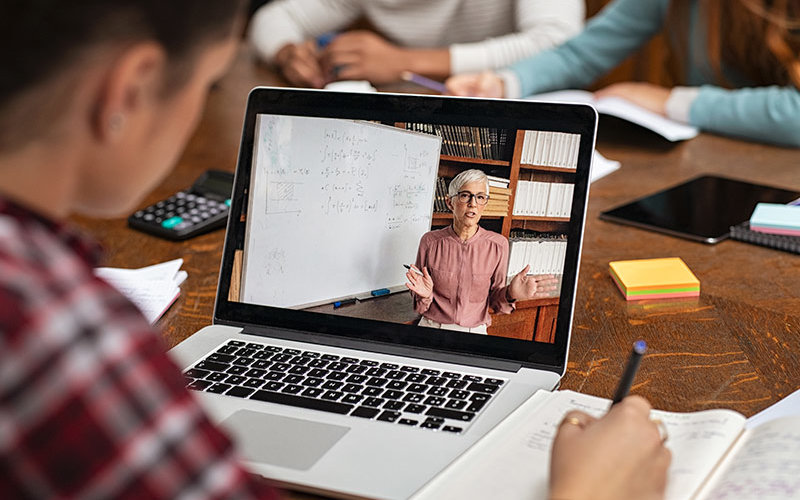
With many K-12 schools and colleges turning to distance learning this coming academic year, education faculty member Lindsay O’Neill stresses the need for educators to bring a human connection to online teaching.
“Teachers and instructors should strive to intentionally foster an online teaching ‘presence’ and make design choices that offer flexibility and accessibility to improve the virtual learning experience to benefit all students,” said O’Neill, lecturer in instructional design and technology.
O’Neill is among College of Education faculty members presenting free webinars for K-12 teachers and students in CSUF’s teacher preparation programs. The summer webinar series, offered through SchoolsFirst Federal Credit Union Center for Creativity and Critical Thinking, focuses on online teaching strategies and support. Topics include “Humanizing Online Teaching” presented by O’Neill, “Growing Young Scientists with Online Teaching Strategies” and “Strategies to Teach Writing Skills Online.”
What is an online teaching presence?
Traditional, in-person learning is a very human experience. Many classroom instructors, when teaching online for the first time, tend to try to do a straight transfer of materials from in-person to online. The instructor might record their lectures and post them online and think that’s enough, but it’s better to format online materials so that their students can interact with the materials in the way that works best for them. ‘Teaching presence’ is both the act of developing an online course and then facilitating it. Instructor presence is important because it helps motivate students and reminds them that they’re part of a learning community. Careful development of an online course includes thinking about what students need to learn, how they’ll learn it, how they’ll know they learned it (via assignments and feedback), and how the instructor will help them along the way.
How can teachers foster their online presence?
An instructor begins to cultivate ‘presence’ by designing a course that has opportunities for student-instructor interaction — and student-to-student interaction — built in. Once the course is in session, an instructor can continue to cultivate presence by interacting with students and facilitating learning activities. For instance, the instructor should moderate class discussions, including asynchronous discussions. The instructor should offer feedback to help guide student learning. Additionally, the instructor maintains presence by responding promptly to student communications, by holding office hours, and by proactively reaching out to students as a class, as well as individually, including if a student seems to be struggling, such as not logging into class or missing assignments.
Why is a social aspect important in online learning?
Cultivating a teaching presence is also a method of adding a social aspect to online courses. Online courses can feel isolating for students, so if an instructor builds in a lot of activities that have a social aspect, students will feel more of a connection to the course and feel more motivated to participate. These activities include working with a partner, as well as group work, coupled with interactions with the teacher. Social activities can include discussions, giving thorough feedback after student assignments, holding office hours and encouraging students to attend, and promptly responding to student inquiries. Building in these opportunities for social interaction from the very start helps keep that presence going. Incorporating social aspects to a learning experience have been proven to lead to greater student retention and student educational success overall.
Visit the website for the complete list of education webinars.
Contact: Debra Cano Ramos, dcanoramos@fullerton.edu